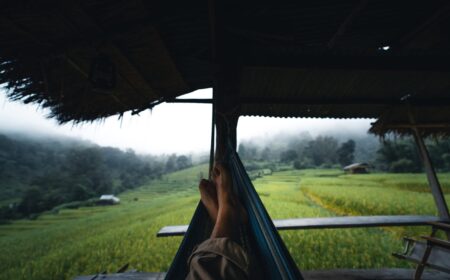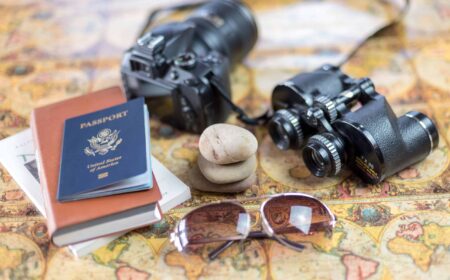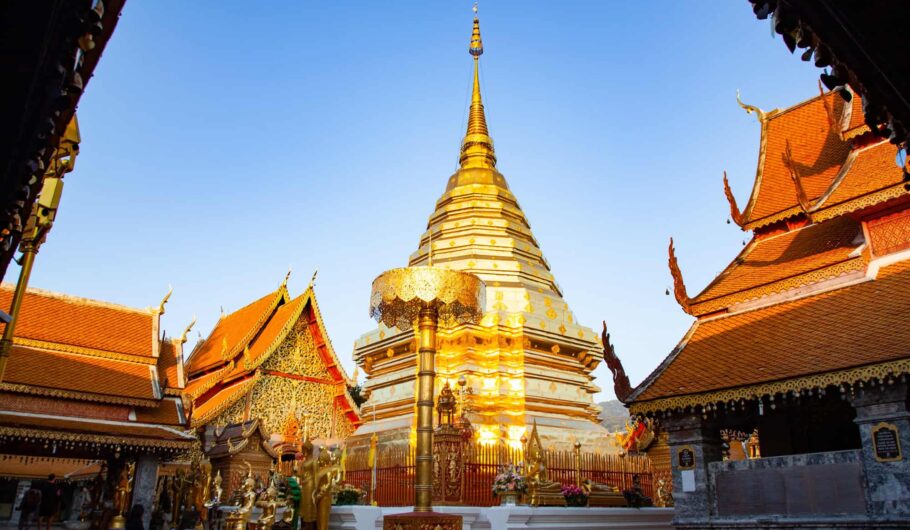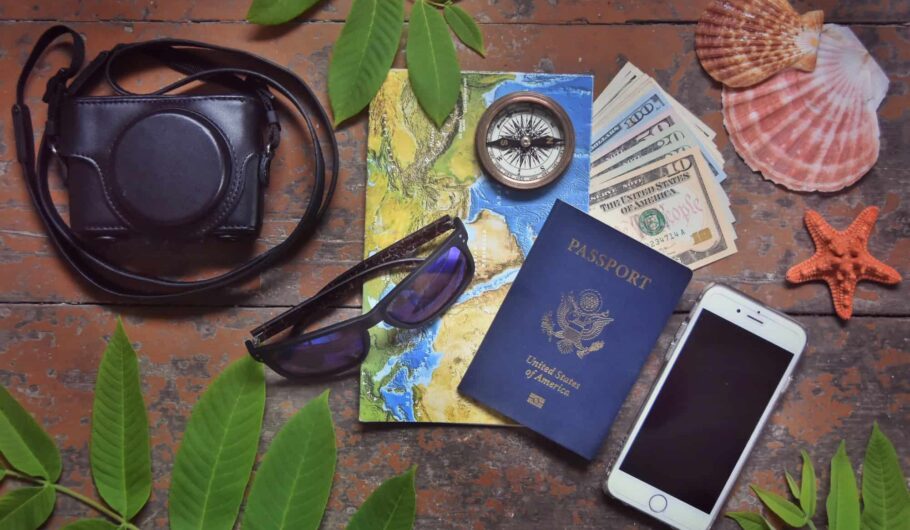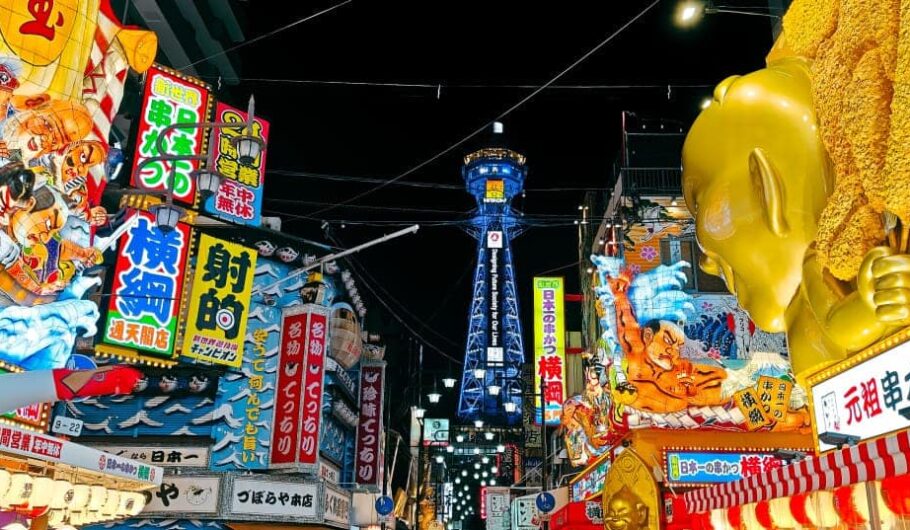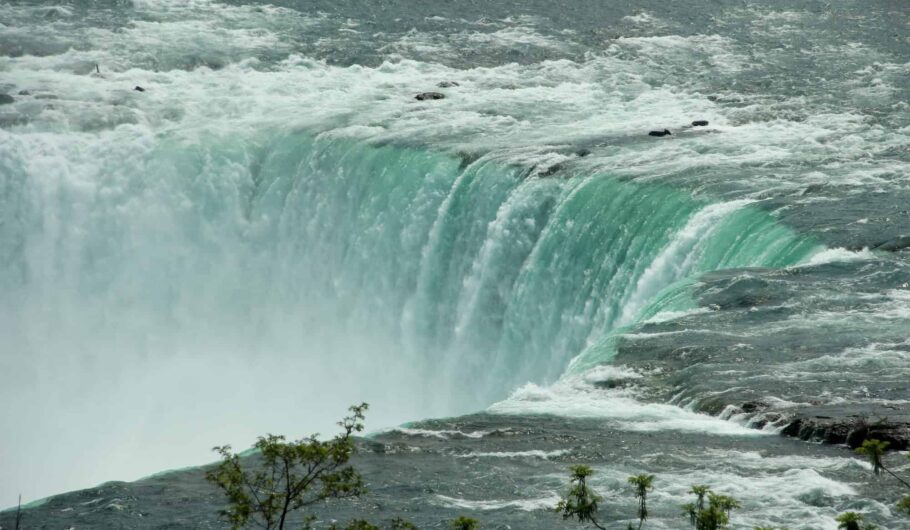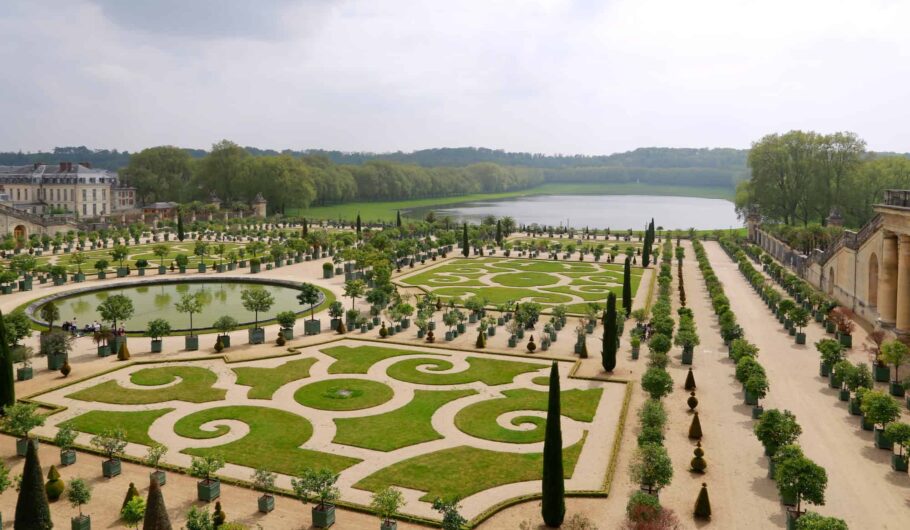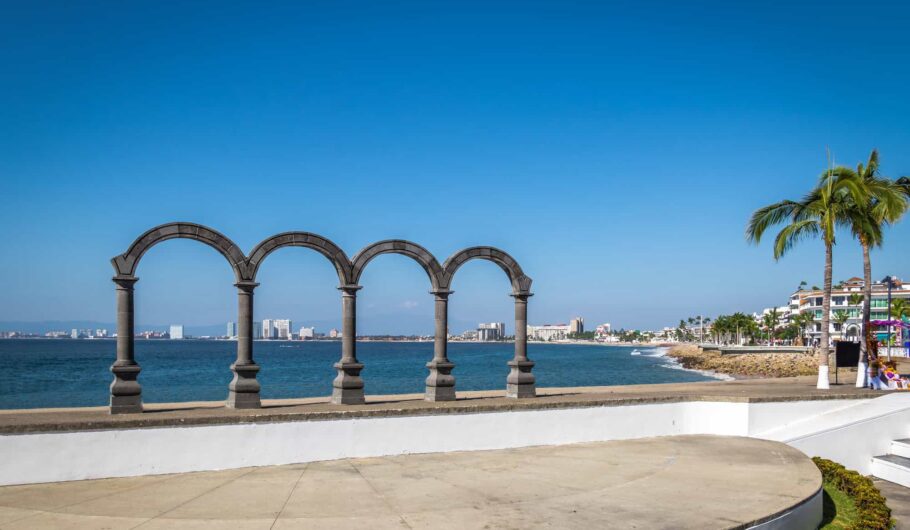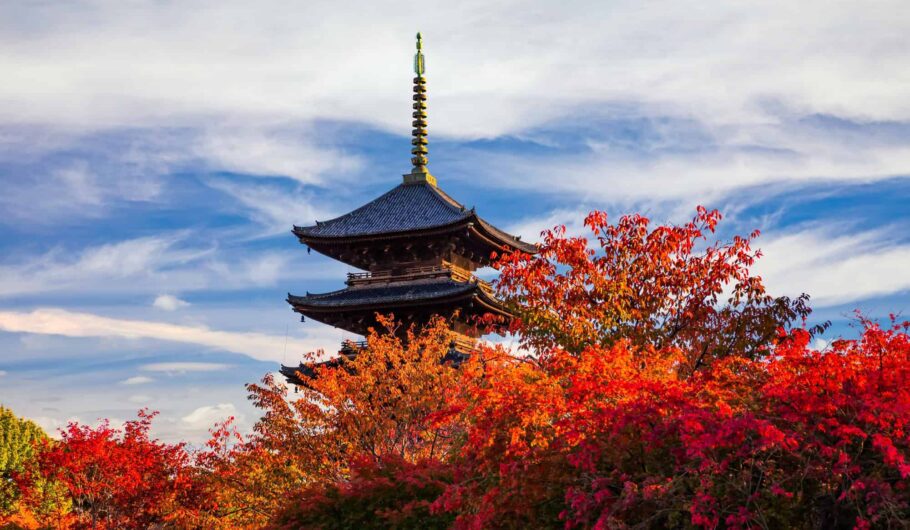Climbing to Heaven
Hey there, fellow wanderlusters!
I’ve got a little gem of a story for you today, and let me tell you, it starts off with a bit of adventure (read: exhaustion). Picture this: I had just traveled for a whopping 18 hours straight—yes, you read that right. After the long flights, layovers, and questionable airplane food (seriously, who thought airplane pasta was a good idea?), all I wanted was a cozy bed and a strong cup of coffee. But as fate would have it, I was in Chiang Mai, and there was a temple calling my name: Wat Phra That Doi Suthep.
Now, let me set the scene. After a brief rest and a deliciously sweet Thai iced tea (seriously, if you haven’t tried one, what are you even doing with your life?), I made my way to the base of the temple. And then, there they were—the infamous stairs. A seemingly endless set of steps that felt like a mini-mountain. In that moment, I thought to myself, “Oh, heck no!” The thought of climbing them made my already weary legs scream in protest.
But then, my amazing Thai friend, who clearly underestimated my fatigue levels, chimed in with a reassuring smile, “Oh, it’s only 100 steps!” I must admit, the thought of only 100 steps made me feel a bit braver (albeit slightly misled). With a deep breath and a little pep talk, I decided to go for it. After all, how hard could 100 steps be, right? Spoiler alert: it was a lot more than that!
So, up I went, one step at a time, taking a quick break halfway to chug some water and remind myself that I was, in fact, on an adventure. And can I just say, it was hot—like, “why-did-I-think-visiting-a-temple-in-the-middle-of-the-day-was-a-good-idea” hot. But as I climbed, I could feel my excitement building. The lush greenery surrounding me became more vibrant with each step, and the anticipation of what awaited at the top kept me moving forward.
Finally, after what felt like an eternity (and a tiny bit of dramatic inner monologue), I made it to the top. And wow, was it worth every single step! The stunning gold of the temple shimmered under the sun, surrounded by breathtaking views of Chiang Mai. I felt like I had stepped into a postcard. The beauty was almost overwhelming—like a warm hug from the universe telling me, “You did it!”
As we wandered around, we approached a monk who greeted us with a genuine smile. He offered blessings and wrapped a piece of string around my wrist, which he said would bring good fortune. I could practically feel the positive vibes radiating off of him! It was such a beautiful moment, one of those experiences that makes your heart swell with gratitude.
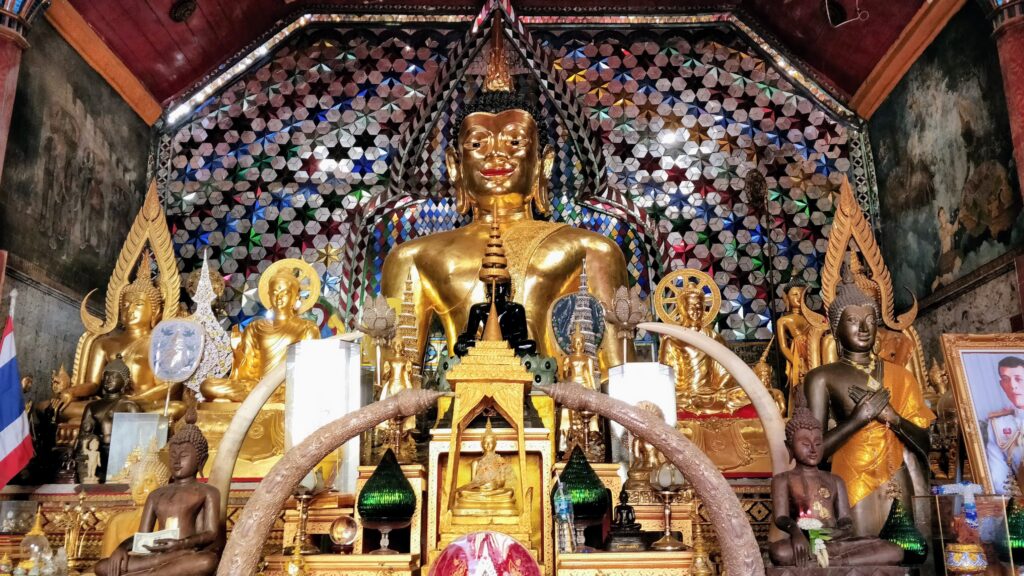
And can we talk about photo opportunities? I was living my best life, snapping pictures left and right. I had seen the statues and the architecture in books and on TV, but standing amongst them in person was surreal. It truly felt like I was part of something much bigger than myself.
Once I got back down (thankfully, gravity helped a bit on the way down), I couldn’t resist the urge to Google how many steps I had actually climbed. Drumroll, please… It turns out it was three times what my friend had told me! 300 steps, people! But you know what? I wouldn’t trade that experience for anything. Sometimes, we need to push ourselves a little further to truly appreciate the beauty around us.
So, if you ever find yourself in Chiang Mai, do yourself a favor and make the trek to Wat Phra That Doi Suthep. Trust me, the climb is worth it. And who knows? You might just find a little piece of magic waiting for you at the top.
Happy travels, my friends! 🌄✨
Unwind in the World’s Serene Spots Amidst Political Unrest
Why Travel in Tumultuous Times?
Hello, my wonderful wanderlusters! We’re living in times where the news could easily convince anyone to just stay home. But—isn’t the beauty of travel all about discovering joy and peace, especially in the places you’d least expect? Today I’m super excited to share my experiences and offer some hot tips on venturing to some of the world’s most tranquil terrains: Iceland, Portugal, Japan, Costa Rica, and New Zealand.
Chilling in Iceland – Where Serenity Meets Adventure
From the minute my feet touched the icy, rugged terrain of Iceland, I knew I was in for a memorable ride. The first breath of that crisp air sent shivers down my spine, but not from the cold—it was pure excitement! Picture this: you’re surrounded by sprawling landscapes that look like they were plucked straight from a fantasy novel, with snow-capped mountains looming in the distance and lava fields stretching out beneath your feet. Each step feels like a new adventure waiting to unfold.
One of the highlights of my trip was soaking in the geothermal spas like the Blue Lagoon. Yes, it’s as cool as it sounds—imagine stepping into a mineral-rich pool of steaming, azure water nestled between black lava rocks. The warmth envelops you like a cozy blanket, and I found myself floating there, with a cocktail in hand, completely at peace. The surreal contrast of the warm water against the brisk, cool air above is something I’ll never forget. Plus, the feeling of pampering myself with a silica mud mask while surrounded by breathtaking scenery? Absolutely divine!
And let’s talk about chasing the Northern Lights! After a cozy dinner in Reykjavik, I bundled up and joined a small group of fellow adventurers to hunt for those elusive green and purple hues dancing across the night sky. It felt like a scene from a movie—standing under a starry sky, with nothing but the sound of silence around us, and then suddenly, there they were! The lights flickered and swirled above us, and I couldn’t help but feel a sense of awe and gratitude for witnessing such natural beauty.
Safety isn’t just a byproduct here; it’s a guarantee. Whether you’re on a well-marked trail or exploring a rugged landscape, I always felt reassured knowing that Iceland takes visitor safety seriously. This sense of security made it so much easier to immerse myself in every experience without worrying about mishaps.
Do you remember that time I got lost trying to find the secret waterfall? It was one of those moments where panic could have easily set in. But guess what? Getting lost here only leads to more breathtaking discoveries! I stumbled upon hidden gems—a rainbow over a less-traveled gorge and even a friendly herd of sheep who seemed just as curious about me as I was about them. In Iceland, you never know what surprises await around the next bend! So, pack your bags, because this incredible country is calling your name!
Portugal Uncovered: An Affordable Journey Through Beauty and Culture
Next stop, Portugal! I haven’t been yet, but it’s firmly penciled in on my budget travel list. From the sunny cliffs of the Algarve to the historic lanes of Porto, Portugal wraps you in charm without emptying your wallet. I mean, who wouldn’t want to wander through the colorful streets of Lisbon with a pastel de nata in hand?
I’ve been brushing up on some affordable travel tips in Portugal, and let me tell you, the stories of friendly locals, stunning azulejos (tiles), and delectable seafood have me counting down the days. Just imagine strolling through the narrow cobblestone streets of Alfama, where each turn reveals a new hidden gem—a quaint café, a vibrant street musician, or maybe an inviting little shop selling handmade crafts. The locals are known for their warm hospitality, often going out of their way to share recommendations or even a few words of Portuguese—trust me, “obrigado” will get you far!
One of the highlights I can’t wait to experience is the iconic azulejos that adorn buildings throughout the country. These intricate ceramic tiles tell stories of Portugal’s rich history and artistry. You can find them everywhere, from grand palaces to humble homes, and they add such a vibrant touch to the landscape. I’ve read that simply walking through cities like Lisbon or Porto feels like stepping into an outdoor art gallery.
And let’s not forget about the food! Portugal is a seafood lover’s paradise. I can already taste the grilled sardines and bacalhau à brás—salted cod prepared with potatoes and eggs. Heck, normally I don’t do dessert, and I was ordering chocolate left and right after hearing about all the delicious pastries. The fresh ingredients and flavors are just calling my name!
Traveling here during political uncertainties elsewhere? This place is a Mediterranean haven of stability. It feels like a safe retreat where you can unwind and soak in the sun without the chaos you might find in other parts of Europe. The cost of living is relatively low, which means you can enjoy all that Portugal has to offer without breaking the bank.
So, if you’re like me and trying to decide on your next adventure, don’t wait! Don’t make my mistake and put it off. Get to Portugal as soon as you can—trust me, your heart (and taste buds) will thank you!
The Zen of Japan: Tradition Meets Tomorrow
Ah, Japan—every visit feels like the first! Whether it’s your first or fifth time, the blend of ultra-modern cities like Tokyo against the backdrop of sacred, tranquil temples in Kyoto offers not just a getaway but a journey through time. It’s like stepping into a living postcard, where neon lights dance across skyscrapers and ancient shrines whisper tales of the past.
Safe and spectacular, Japan’s cultural experiences have a way of humbling you. I remember walking through the bustling streets of Shibuya, surrounded by a sea of people, and being completely captivated by the energy. Yet, just a short train ride away, I found myself in the serene gardens of the Ryoan-ji Temple in Kyoto, where the simplicity of the rock garden invited deep reflection. There’s this magical contrast between the frenetic pace of life in Tokyo and the peacefulness of Kyoto that makes every moment unforgettable.
And let’s talk about transportation—shinkansen (bullet trains), anyone? These sleek marvels zip you across the country at lightning speed while ensuring that you’re comfortable and relaxed. I’ll never forget the thrill of boarding one, feeling like I was in a futuristic movie. It was so smooth that I barely noticed we were traveling at over 180 miles per hour! Seriously, if you’ve ever dreamed of gliding through beautiful landscapes while sipping on green tea, this is it.
Then there are those little moments that make travel memorable. Like that time I tried to order ramen in broken Japanese and ended up with the best meal of my life. Picture this: I walked into a tiny, bustling ramen shop, where the air was thick with the intoxicating scent of broth simmering away. I fumbled through my order, gesturing wildly, and somehow ended up with a steaming bowl of rich, savory tonkotsu ramen topped with perfectly soft-boiled eggs and green onions. Each slurp was pure bliss! Moments like these remind me why I travel: to connect with cultures and create unforgettable memories.
So, don’t make my mistake and put it off! Get to Japan as soon as you can. Trust me, every corner has a story waiting to be uncovered, and each experience is sure to leave you wanting more. Japan lives up to all expectations, offering not just sights but feelings that linger long after you’ve returned home.
Costa Rica: Family, Frogs, and Endless Forests
Guanacaste, in Costa Rica, holds a special place in my heart, especially because some of my family lives there. Although I haven’t had the chance to visit yet, I feel a deep connection to the region through their stories and experiences. When they describe their home, it sounds like a slice of paradise that I can’t wait to explore.
The landscapes of Guanacaste are nothing short of breathtaking. Picture golden beaches stretching along the Pacific coast, where the sun sets in vibrant hues of orange and pink. My family often talks about the beauty of Playa Tamarindo, where surfers catch waves and beachgoers soak up the sun. I can imagine myself lounging on the sandy shores, feeling the warm sun on my skin and listening to the soothing sound of waves crashing nearby.
One exciting aspect of my family’s life in Guanacaste is that they run a surf lesson business! They’re deeply passionate about surfing and love sharing that enthusiasm with newcomers. I’ve heard so many stories about teaching visitors how to ride the waves and seeing their joy when they finally stand up on the board for the first time. It’s heartwarming to think about how they help create unforgettable memories for others while doing something they love. You can check out my blog entry for their surfing business, Mojo Surf Adventures.
But it’s not just the beaches that make Guanacaste special; it’s also the rich culture and traditions that thrive there. My family has shared tales about local festivals filled with music, dancing, and delicious food. These celebrations bring the community together, creating an atmosphere of joy and connection. I can almost taste the fresh ceviche and traditional casados they rave about—each dish reflecting the vibrant local flavors that make Costa Rican cuisine so unique.
Outdoor adventures are abundant in Guanacaste, and I’m excited about all the activities waiting for me. Some family members frequently go hiking in Rincón de la Vieja National Park, where they encounter stunning waterfalls and diverse wildlife. I can’t wait to trek through lush trails and discover the beauty of this national park for myself. It sounds like the perfect way to immerse myself in nature!
Knowing that some family members are in Guanacaste running a surf lesson business only adds to my excitement about visiting Costa Rica. Their warmth and hospitality make every visit feel like a homecoming, and I can’t wait to create lasting memories with them in this beautiful region. So if you’re considering a trip to Costa Rica, make sure to include Guanacaste on your itinerary—it promises stunning landscapes, rich culture, and unforgettable experiences that will stay with you long after you leave!
New Zealand: Budget-Friendly Big Adventures
Oh, New Zealand, you’re next on my list! Known for its dramatic landscapes and adventure sports, this beautiful country is where budget meets adrenaline. I can already imagine the excitement of hiking up glaciers, feeling the cool wind against my face as I conquer those icy trails. And let’s not forget about star-gazing in one of the world’s darkest skies; it’s like stepping into a postcard where every twinkling light feels closer than ever before—talk about epic!
The planning stage has been an adventure in itself. I’m piecing together a travel itinerary that balances thrilling activities with some smart budgeting tips. From what I’ve gathered so far, New Zealand offers a plethora of free or low-cost activities that are just waiting to be explored! Hiking is high on my agenda—there’s nothing quite like hitting those picturesque trails with the stunning backdrop of snow-capped mountains and lush valleys surrounding you. The Routeburn Track or the Tongariro Alpine Crossing are calling my name.
I also want to experience the culture while I’m there. I can’t resist the thought of tasting a traditional hangi feast, where food is slow-cooked underground. Just thinking about it makes my mouth water! It’s such an incredible way to connect with local traditions—you know me and food; we’re best buds!
And yes, I’m definitely going to visit Hobbiton; it’s not just for fans of “The Lord of the Rings,” but also for anyone who loves whimsy and charm. Walking through that vibrant set surrounded by rolling green hills will surely feel like stepping into a dreamland—perhaps one that involves second breakfast!
Let’s not overlook Queenstown, known as the adventure capital of New Zealand. Whether it’s bungee jumping into canyons or taking a scenic jet boat ride through pristine waters, I plan to squeeze every ounce of fun (and maybe fear) out of my time there.
So get ready! Expect tales filled with laughter from hobbit holes, breathtaking hikes under starry skies, and unforgettable moments shared over delicious hangi feasts soon enough! Don’t make my mistake and put off visiting this stunning destination any longer—New Zealand awaits with open arms and endless adventures!
Embrace the Journey
Friends, packing up and heading off into unknown lands can often seem daunting, especially with the heavy political clouds hanging over many parts of the world. However, if you take a chance like I did, stepping into the aircraft with a heart full of excitement and a suitcase full of curiosity (and maybe some sensible shoes), you’ll find that each of these countries not only welcomes you with open arms but also wraps you in a safety blanket of cultural richness and serene landscapes.
Don’t let the what-ifs stop you. Get out there, explore, and turn the moments into memories that will light up even the gloomiest days. And remember, always search for peace, thrill, and safe travels!
Unique Travel Destinations That Top My Bucket List
Bucket List of Unique Travel Destinations
Unique travel destinations offer experiences that differ from typical tourist spots. They present travelers with extraordinary sights and cultural encounters. These locations often include hidden gems or lesser-known areas that provide a glimpse into a region’s authentic atmosphere. Such destinations can provide peace, adventure, or even a chance to learn something new.
Stepping off the beaten path is essential for any wanderlust-filled journey. It allows travelers to connect more deeply with the local culture and people. The thrill of discovering a unique travel destination can lead to unforgettable memories. It fosters a sense of exploration and curiosity, often resulting in stories worth sharing. Traveling in this way encourages individuals to engage with the world, enriching their perspective.
This article will explore various unique travel destinations, from the historical sites in Cambodia to the best places to visit in Japan and unique experiences in South Korea. Each location offers something special, whether it’s the stunning views, rich history, or vibrant culture. Prepare to be inspired by these travel guides that promise adventures beyond the ordinary.
Exploring South Korea: A Travel Guide
South Korea is a treasure trove of vibrant culture and rich history. From the bustling streets of Seoul to the serene landscapes of Jeju Island, this country offers a unique blend of modernity and tradition. The palaces in Seoul, like Gyeongbokgung, reflect the architectural beauty of the past. Visitors can easily immerse themselves in local history by exploring these sites. Each city has its own unique charm, making it one of the best places to visit in Japan.
When traveling through South Korea, unique destinations await around every corner. Jeonju is famous for its hanok village, where traditional wooden houses stand in harmony with modern cafes. Busan boasts stunning beaches and a vibrant fishing culture. Don’t miss the chance to visit the DMZ for a glimpse into the country’s divided history. These experiences highlight the best places to visit in Japan while also showcasing the distinct nature of South Korea.
Local cuisine is an essential part of the South Korean experience. Dishes like bulgogi and kimchi are not just meals; they represent a deep cultural heritage. Street food markets, especially in Seoul, offer a range of flavors and textures. When visiting, respect local customs, such as bowing and using two hands when giving or receiving items. Practical travel tips are vital for a smooth journey, so make sure to learn a few basic Korean phrases. This will enhance your interactions and help you navigate this fascinating country.
Japan: Best Places to Visit
Japan is a land where tradition meets modernity. Visitors can explore ancient temples in Kyoto, then head to Tokyo’s neon-lit streets. This blend makes Japan a captivating destination. Each city offers unique experiences. For example, Nara is famous for its friendly deer and historic shrines. Meanwhile, Fukuoka boasts delicious ramen and vibrant festivals.
Beyond the major tourist attractions, Japan has hidden gems. The coastal town of Kamakura features beautiful beaches and hiking trails. Okayama is home to Korakuen Garden, one of the country’s most beautiful landscapes. These unique travel destinations provide a more local feel. Travelers can immerse themselves in everyday Japanese life, making memories that last.
Cultural experiences abound in Japan. Try a tea ceremony or stay in a ryokan for authentic lodging. Learning some basic Japanese phrases can enhance your travel experience. It’s also wise to purchase a Japan Rail Pass for easy transfers. This makes exploring Japan travel guide friendly. With careful planning, visitors can see the best places to visit in Japan without hassle.
Historical Sites in Cambodia: A Journey Through Time
Cambodia holds a significant place in history. The country is home to the Khmer Empire, which flourished from the 9th to the 15th centuries. This period produced remarkable architecture, art, and culture. Travelers often seek out these historical sites. They reveal insights about the past. This makes Cambodia one of the best places to visit in Southeast Asia.
Angkor Wat stands as a symbol of Cambodia’s grandeur. It is the largest religious monument in the world. Visitors marvel at its intricate carvings and massive scale. Beyond Angkor Wat, other sites like Bayon Temple and Ta Prohm showcase unique architectural styles. These sites provide a glimpse into the daily life of ancient Cambodians. Expect to be surrounded by lush jungles and serene landscapes as you explore.
Visiting these historical sites offers more than just sightseeing. Travelers gain cultural insights and appreciation for Cambodian history. Engage with local guides to enrich your experience. They share stories and traditions that bring the past to life. It’s essential to travel responsibly. Respect the sites and the local community. Be mindful of your impact. Support local businesses and practice sustainable tourism. This ensures that these beautiful places remain for future generations.
Conclusion: The Joy of Discovering Unique Places
In this journey through unique travel destinations, we have explored some remarkable locations. Each destination offers a blend of culture, history, and adventure. From the vibrant streets of South Korea to the serene temples of Cambodia, each place invites you to discover its charm. The best places to visit in Japan showcase stunning landscapes and rich traditions. They remind us of the beauty that waits to be uncovered around the world.
Exploring unique travel experiences is essential for personal growth. Traveling to historical sites in Cambodia connects you with the past. It enriches your understanding of the world. Visiting South Korea allows you to immerse yourself in a culture that is both modern and traditional. Every journey shapes who we are, broadening our perspectives and igniting our curiosity. Embrace the call of wanderlust and take the plunge into new adventures.
Traveling is not just about the destinations; it’s about the experiences that shape us. Each unique travel destination teaches us something new. It fosters connections with different cultures and communities. The more we explore, the more we grow. Unique travel destinations are waiting for you. Embrace the journey and let it transform you.
Cultural Etiquette in Japan
Introduction to Japanese Culture
Japan boasts a rich cultural history that spans thousands of years. From ancient traditions to modern practices, Japanese culture reflects a unique blend of influences. The country’s history includes periods of isolation and interaction with other nations. This has led to a diverse cultural landscape that is both fascinating and complex. Ancient art forms, literature, and philosophy are deeply intertwined with contemporary life. Understanding this history is essential for appreciating Japan’s cultural etiquette.
Etiquette plays a crucial role in Japanese society. It is a reflection of respect, harmony, and consideration for others. Social interactions are guided by unwritten rules that govern behavior in various situations. These rules are not just formalities; they are integral to maintaining social order. In Japan, politeness is emphasized in every interaction. This emphasis on etiquette helps to foster a sense of community and mutual respect among individuals.
Cultural values in Japan significantly shape behavior and interactions. Concepts like “wa” (harmony) and “omotenashi” (selfless hospitality) influence how people relate to one another. These values dictate both personal and public conduct. For example, bowing is a common greeting that symbolizes respect. Similarly, gift-giving is a thoughtful gesture that reflects care and appreciation. Recognizing these cultural values is vital for anyone looking to navigate social settings in Japan with respect.
Greetings and Introductions
In Japan, greetings play a crucial role in social interactions. Bowing is the most common form of greeting. It shows respect and acknowledges the other person’s presence. The depth of the bow varies based on the situation and the relationship between the individuals. A slight bow is typically used for casual greetings, while a deeper bow is reserved for formal occasions. Understanding the significance of bowing can enhance communication and foster positive relationships.
Introducing oneself in Japan follows specific customs. When introducing yourself, it is customary to state your name and your affiliation or title. It is polite to use the phrase, “Hajime mashite” which means “Nice to meet you.” Additionally, using both hands to present your business card, or “meishi,” is essential. This gesture shows respect for the other person and their status. Always take a moment to carefully examine the card before putting it away, as this reflects your acknowledgment of the individual.
Common phrases used in greetings include “Konnichiwa,” meaning “Hello” during the day, and “Konbanwa,” which means “Good evening.” Another essential phrase is “Ogenki desu ka?” which translates to “How are you?” Responding appropriately is important. A simple “Genki desu” or “I’m fine” suffices. Using these phrases correctly can create a welcoming atmosphere and demonstrate cultural awareness.
Dining Etiquette
Dining in Japan is an essential cultural experience. Meals serve as a time for family and friends to gather, share stories, and bond. Japanese culture places high importance on mealtimes, viewing food as a way to appreciate nature and the seasons. Each dish reflects the care taken in its preparation and presentation, emphasizing the artistry behind Japanese cuisine. Mealtimes are often accompanied by rituals that highlight respect for the ingredients and the people who prepared them.
Traditional dining practices are critical in Japan. When eating, using chopsticks properly is a must. It is essential to hold them at the thicker end, avoiding pointing them or sticking them upright in rice. Expressing appreciation is also crucial in Japanese dining culture. Saying “itadakimasu” before the meal shows gratitude for the food. Similarly, saying “gochisousama deshita” after eating acknowledges the effort put into the meal. These simple phrases reflect a deep respect for the food and those who prepared it.
There are specific behaviors to avoid at the dining table in Japan. One should never pass food directly from chopstick to chopstick. This practice is associated with funerals and is considered very disrespectful. Avoid speaking with a full mouth, as it is seen as impolite. Additionally, do not pour your own drink, as this goes against the custom of pouring for others first. Being mindful of these etiquette guidelines ensures a respectful and enjoyable dining experience in Japan.
Public Behavior and Manners
Public behavior in Japan reflects deep cultural values. It is crucial to understand appropriate public behavior in Japan to show respect. In social settings, people often maintain a quiet demeanor. Loud conversations or boisterous laughter in public spaces can disturb others. It is common to see people using their phones discreetly, avoiding loud ringtones and notifications. This norm helps create a peaceful environment for everyone.
Quietness and respect in public spaces are hallmarks of Japanese culture. When using public transport, it is expected to remain silent. Conversations should be kept to a minimum, and phone calls are generally avoided. Many commuters read or listen to music with earphones. This behavior fosters a sense of harmony among passengers. Additionally, it is polite to give up your seat for elderly people, pregnant women, or those with disabilities.
There are common taboos and avoidable behaviors in public. For instance, eating while walking is often frowned upon. This practice can be seen as disrespectful. Instead, people usually eat in designated areas. Another common faux pas is pointing at others or using aggressive gestures. This behavior can be perceived as rude. Understanding these public manners helps tourists navigate social situations gracefully in Japan.
Conclusion: Embracing Japanese Etiquette
Cultural awareness plays a vital role in our interactions, especially in Japan. Understanding Japanese etiquette is not just about following rules; it is about showing respect and appreciation for the culture. When you learn and apply these customs, you foster goodwill and create meaningful connections with those around you. This understanding enriches your experiences and deepens your relationships.
Working While Traveling Solo for 2025
Digital nomadism is a lifestyle that enables individuals to work remotely while exploring the world. This concept has gained significant traction in recent years, propelled by advancements in technology and connectivity. With reliable internet access, many have discovered the ability to perform their jobs from virtually any location. As traditional office settings become less prevalent, a growing number of professionals are choosing the freedom of working while traveling solo. This shift has rendered digital nomadism a highly sought-after lifestyle, seamlessly blending work with exploration.
Various forms of digital nomad work cater to diverse skills and interests. Freelancing is a popular choice, with individuals offering services on platforms like Upwork or Fiverr. Remote employment with companies that permit telecommuting presents another viable option. Some engage in entrepreneurial ventures, launching their own online businesses. Each pathway provides the flexibility essential for embracing a solo travel lifestyle. This diversity in work opportunities ensures that anyone can find a suitable path aligning with their goals and skills.
The benefits of adopting a digital nomad lifestyle are abundant. Individuals can immerse themselves in new cultures, connect with diverse people, and gain unique experiences while maintaining their careers. This lifestyle fosters personal growth by encouraging independence and adaptability. Additionally, it facilitates a better work-life balance, allowing individuals to choose their working hours and locations. For many, the excitement of new experiences combined with the ability to earn a living leads to a fulfilling and enriching life.

Preparing for Solo Travel as a Digital Nomad
When preparing for solo travel as a digital nomad, selecting the right destination is crucial. Consideration should extend beyond the allure of a location to include practical aspects of remote work. Researching internet connectivity and the overall environment of potential destinations is essential. Places with reliable Wi-Fi and conducive workspaces can significantly impact productivity. Cities like Bali and Lisbon are popular choices, offering vibrant communities and various coworking spaces that cater to digital nomads, ensuring an effective balance between work and travel.
Budgeting and financial planning are vital steps for anyone embarking on a solo travel adventure. Determining income sources and anticipated expenses—including accommodation, food, and transportation—is necessary. Establishing a clear budget helps avoid unexpected financial strains. Utilizing local currencies and cost-effective travel options can extend one’s budget while enjoying the experiences that come with working while traveling.
Packing essentials for working on the go is another critical aspect of preparation. Packing light while ensuring all necessary tools for remote work are included is advisable. This includes a reliable laptop, portable Wi-Fi hotspot, noise-canceling headphones, chargers, a power bank, and essential documents. Organizing gear effectively supports efficiency and focus, maximizing the solo travel experience.
Setting Up a Productive Work Environment Anywhere
Establishing a conducive work environment is vital for productivity while traveling. Identifying coworking spaces and cafes with reliable Wi-Fi is beneficial, as these venues provide the necessary atmosphere for focused work. Online reviews can guide travelers to popular spots in their destinations. Engaging with local communities in these spaces can lead to new friendships and networking opportunities, enhancing the solo travel experience.
Creating a mobile office is another key component of digital nomadism. Essential tools might include a portable laptop stand, noise-canceling headphones, and an organized backpack. A lightweight, portable Wi-Fi hotspot can be invaluable in areas with unreliable connections. Designating a specific workspace within accommodations helps establish a routine, facilitating a clear distinction between work and relaxation modes.
Balancing work and exploration is integral to the digital nomad lifestyle. Scheduling work hours that allow for adventures, such as exploring local attractions during off-peak times, can enhance the experience. Maintaining a set work routine enables enjoyment of new experiences without compromising professional responsibilities. Flexibility remains essential, as spontaneous opportunities for exploration may arise, and embracing such moments can enrich the overall journey.
Staying Connected and Managing Time Zones
Maintaining connectivity is crucial in digital nomadism. Utilizing tools and apps like Slack, Zoom, and Microsoft Teams facilitates seamless communication with clients and colleagues, regardless of location. These platforms support collaboration and help sustain a sense of connection within one’s professional network, which is vital when working while traveling solo.
Time management becomes essential when operating across different time zones. Tools like World Clock or Time Zone Converter assist in tracking clients’ and team’s working hours, aiding in the scheduling of meetings without confusion. Additionally, setting specific work hours that align with key contacts can optimize productivity. Planning ahead minimizes disruptions, allowing for a smoother work-life balance and enabling enjoyment of travel experiences while meeting professional commitments.
Creating a work schedule that accommodates travel plans is also strategic. While flexibility is a benefit, establishing boundaries is important. Allocating specific time blocks for work ensures task completion, and distinguishing between work and exploration times helps maintain focus. Digital calendars can aid in planning both professional and travel activities, supporting a harmonious balance between the two.
Overcoming Challenges of Traveling Solo While Working
Traveling solo while working can sometimes lead to feelings of loneliness. To mitigate this, seeking out local communities is beneficial. Joining coworking spaces or attending meetups can facilitate connections with like-minded individuals, fostering friendships and creating a support network that enhances the journey.
Managing work-life balance on the road presents another challenge. The freedom to work from anywhere can blur the lines between professional and personal time. Setting clear boundaries for work hours is crucial. Creating a schedule that accommodates both productivity and leisure ensures a healthy balance, allowing for focus on professional responsibilities while enjoying the unique experiences of solo travel.
Potential work-related challenges, such as unreliable internet connections and navigating varying time zones, can disrupt workflow. To mitigate these issues, it’s essential to have contingency plans. For instance, always have a list of backup workspaces with dependable internet access in your vicinity. Investing in a portable Wi-Fi hotspot can also provide a safety net in areas with spotty connectivity.
Time zone differences can pose scheduling challenges, especially when coordinating with clients or teams across the globe. Utilizing tools like World Time Buddy or Time Zone Converter can assist in planning meetings at mutually convenient times. Additionally, setting clear expectations with clients regarding your availability can prevent misunderstandings and ensure smooth communication.
In conclusion, embracing the digital nomad lifestyle offers a unique opportunity to blend work with exploration. While challenges exist, with proper preparation and adaptability, it’s possible to create a fulfilling and productive experience. The freedom to choose your workspace and the chance to immerse yourself in diverse cultures make the journey worthwhile. So, pack your essentials, plan diligently, and embark on your solo adventure with confidence. The world awaits, and your office can be wherever you choose it to be.
Preparing for Solo Travel
- Destination Research:
Nomad List – Reviews of digital nomad hotspots (e.g., Bali, Lisbon).
Speedtest Global Index – Validates internet speeds globally. - Budgeting Tools:
NerdWallet Budgeting Guide – Tips for financial planning. - Packing Essentials:
Wirecutter Travel Gear Recommendations – Tech and packing guides.
Getting to Know Niagara Falls
Niagara Falls is a natural wonder that captivates millions of visitors every year, showcasing the sheer power and beauty of nature. It’s a place where awe-inspiring views meet a buzzing tourist scene, which can sometimes feel overwhelming. While the falls themselves are breathtaking, the surrounding area has its share of tourist traps and overpriced dining options. If you’re planning a trip, there’s no need to worry. With a little planning and awareness, you can dodge the pitfalls and enjoy everything this iconic destination has to offer.
Niagara Falls spans both the U.S. and Canada, each side offering its own charm. The American side is known for its close-up views and access to nature trails, while the Canadian side is famous for its sweeping panoramas and lively entertainment district. Both sides, however, feature areas designed to cater to tourists, often at inflated prices. It’s a good idea to plan your visit carefully. Using a map, whether digital or printed, can help you identify key attractions and avoid unnecessary detours. If time allows, exploring both sides of the border can provide a fuller experience, but your choice will depend on your interests and visa requirements.
Tourist traps are a common feature in such popular destinations. Shops and vendors near the falls often charge steep prices for basic items like snacks, water, or souvenirs. I experienced this firsthand when I took some friends to Niagara Falls. They wanted to buy cigarettes and a lighter, but finding a store was a challenge in itself. When we finally did, the prices were shockingly inflated—nearly 100% more than what you’d pay outside the tourist area. It was a clear reminder that convenience near major attractions often comes at a hefty cost.
Aggressive sales tactics are another red flag, with vendors urging you to buy immediately, often at inflated prices. Some attractions may seem enticing but offer little value, relying more on gimmicks than substance. To make the most of your visit, consider exploring less commercialized areas. The Niagara Gorge or the peaceful trails along the Niagara River provide stunning views without the crowds. Local museums and historical sites, such as the Niagara Falls History Museum or Old Fort Niagara, can also offer a more authentic and enriching experience.
Dining in Niagara Falls can be another tricky area to navigate. Restaurants in tourist-heavy zones often come with hidden fees that can take you by surprise. Service charges, which are sometimes automatically added to the bill, can range from 15% to 20%. If you request substitutions in your meal, such as swapping fries for a salad, there may be extra charges. Sharing a dish with a friend might also incur a plate-splitting fee. Beverages, especially alcoholic ones, tend to have significant markups, and in Canada, menu prices often don’t include taxes, which can make your final bill higher than expected.
To avoid unpleasant surprises, take a moment to read the menu carefully, paying attention to any fine print about additional fees. Don’t hesitate to ask your server questions if something isn’t clear. When your bill arrives, review it thoroughly to ensure there are no unexpected charges. If you’re looking to simplify things, some restaurants offer fixed-price menus that include drinks and gratuities, which can be a convenient way to manage costs.
Despite these challenges, Niagara Falls is a destination worth savoring. There are plenty of free or low-cost ways to enjoy the area. Strolling along the Niagara Parkway or exploring the trails on Goat Island are wonderful ways to take in the scenery. Parks and lookout points offer incredible views and photo opportunities without spending a dime. It’s these simple, beautiful moments that make the trip truly memorable.
Visiting Niagara Falls is about more than just avoiding tourist traps and hidden fees—it’s about immersing yourself in the awe-inspiring beauty of the falls and the surrounding area. By staying informed and planning ahead, you can focus on the wonder and adventure that await. So lace up your walking shoes, pack your curiosity, and get ready for an unforgettable experience. The falls are calling, and you’re more than ready to answer.
Discovering the Grandeur of Versailles Palace
The journey to Versailles itself was an adventure. Boarding the RER train, I was surrounded by fellow visitors, all buzzing with excitement and conversations about Marie Antoinette and King Louis XIV. As we drew closer to the palace, my anticipation grew. The sight of the sprawling gardens and the opulent golden gates was breathtaking, reinforcing why Versailles is such a celebrated landmark.
Upon arrival, I was greeted by a sea of visitors eager to delve into the rich history contained within the palace walls. The energy was palpable as we made our way toward the grand entrance. Crossing the threshold felt like stepping into another era—a world where opulence and elegance were paramount. The gilded halls, adorned with crystal chandeliers and exquisite frescoes, were nothing short of awe-inspiring. Each room not only showcased immense wealth but also the artistry and craftsmanship of a time when attention to detail was of utmost importance.
The Hall of Mirrors was particularly mesmerizing. This grand hall, with its seventeen mirrored arches reflecting the garden through equally numerous windows, epitomized the glory of the French monarchy. Standing there, I could almost hear the echoes of history—the whispers of royal gatherings, lavish celebrations, and pivotal decisions that shaped the nation. While I marveled at the beauty surrounding me, I couldn’t help but ponder the complexities of a monarchy that indulged in such extravagance.
As I continued my exploration, I became increasingly enchanted by the stories behind each room and piece of decor. The palace was filled with fascinating anecdotes about the lives of its former inhabitants. From Marie Antoinette’s private chambers, which offered a glimpse into her personal life beyond the public opulence, to King Louis XIV’s ambitious projects designed to showcase France’s power through grandeur, every corner seemed to hold a secret waiting to be uncovered.
Strolling through the expansive gardens, I took a moment to appreciate the tranquility they offered—a stark contrast to the opulence inside the palace. The carefully designed landscapes, with their geometric patterns and ornamental lakes, were not only beautiful but also a testament to the meticulous planning and artistry of landscape architect André Le Nôtre. It was easy to imagine royalty enjoying leisurely walks amidst the blooming flowers, contemplating their reign and responsibilities.
Reflecting on my visit, I realized that experiencing Versailles is about more than just witnessing its beauty; it’s about connecting with history and gaining insight into the lives of those who once walked its halls. The grandeur, while seemingly excessive by today’s standards, tells a story of ambition, power, and artistry that significantly influenced the nation’s history.
In conclusion, my visit to the Palace of Versailles was a journey into a world where royalty thrived in unimaginable luxury. The displays of wealth were striking, yet they also prompted deeper contemplation about history and the complexities of royal life. Though it stands today as a major tourist destination, the palace remains a profound reminder of a time when it was the epicenter of French power and culture. For anyone interested in history, architecture, or the intricacies of royal life, Versailles is truly a must-see—a window into a magnificent past that continues to inspire awe.
A Solo Traveler’s Journey
This contrasting experience allows for deep engagement, not just with the world around us but within ourselves. Such dualities gently nudge us toward self-discovery and personal growth. Amidst the trials of solo travel, there’s a unique kind of freedom that’s hard to put into words. This freedom comes in many forms: spontaneity allows for last-minute adventures, while time spent alone encourages introspection, helping travelers clarify their desires. Embracing solitude means not just having space for exploration but also discovering a deeper sense of self, turning every journey into a mirror reflecting who we truly are.
Stepping into solo travel brings an exhilarating sense of liberation. Unlike group trips, where preferences can clash, traveling alone enables complete control over the experience. In Barcelona, each sunrise felt like an invitation to new adventures without the constraints of schedules or reservations; I had the luxury to wander freely. This autonomy is refreshing, allowing travelers to explore places that resonate with their spirit.
Every decision on the road becomes a reflection of personal desires. For instance, I chose spontaneous sushi dinners while chatting with locals in Japan instead of dining at structured restaurants. This decision not only enriched my experience but also created lasting memories filled with laughter and shared stories—though I sometimes wished I could share those moments with someone special.
Solo travel presents unique opportunities: discovering hidden gems often overlooked in guidebooks, engaging with local culture on one’s own terms, and fostering a deeper connection with oneself by tuning into inner instincts. Embracing spontaneity nurtures an adventurous spirit, making each journey truly one’s own.
However, solo travel can also lead to moments of solitude that may feel overwhelming. Walking along serene paths in Japan, the silence around me was palpable. The soothing sounds of nature created a comforting ambiance, yet the absence of familiar voices was keenly felt. These moments can vary from quiet contemplation to deeper isolation, prompting travelers to confront their emotions head-on while wishing for a companion to share their thoughts.
Dining alone often brings attention to empty seats that can starkly remind us of solitude. Similarly, solitary strolls through Paris juxtapose the vastness of the city with the lone figure navigating its streets, creating a reflective experience. Despite being daunting, these moments are invaluable for personal growth. Solitude encourages introspection, allowing us to recognize our inner strength and develop self-awareness through deep reflection on thoughts and emotions.
While solo travel may evoke feelings of loneliness, it is often within these quiet moments that genuine transformation occurs, revealing strengths we never knew we had. Interestingly, moments of solitude also pave the way for authentic connections that might otherwise go unnoticed. As I wandered the lively streets of Barcelona, I found myself engaged in heartfelt conversations with friendly locals. Sharing stories over tapas or learning traditional recipes transformed my experience from mere sightseeing into a rich cultural immersion.
Visiting local markets allowed me to connect with vendors, turning simple exchanges into vibrant community interactions. Participating in folk festivals introduced me to customs that significantly deepened my journey. These genuine interactions lead to meaningful exchanges that underscore the essence of solo travel. Whether it was listening to a street musician share tales about their craft or sharing laughter with a family over dinner, each encounter deepened my understanding of the world around me—and made me wish I could share those connections with someone who appreciated them just as much.
Shifting from enriching experiences to unexpected connections reveals that solo travel embodies more than exploration; it reshapes our mindset. It’s not solely about traversing new landscapes but cultivating openness and resilience. Viewing travel as an internal journey allows for a deeper appreciation of every moment. Embracing uncertainty opens doors for unexpected discoveries while nurturing curiosity fosters meaningful connections with locals and fellow travelers alike. This mindset creates a profound journey toward understanding oneself and the world at large.
Reflecting on my solo travels, I find beauty in quiet moments resonates strongly. During a peaceful sunset overlooking the ocean in Japan, I learned to cherish the calmness solitude can bring. Sitting on a rock and watching waves caress the shore offered a serenity often drowned out by daily life’s noise. Taking mindful breaths while absorbing nature can ground us. The sounds of waves and rustling leaves create a peaceful backdrop for contemplation.
These quiet instances become sacred spaces for connecting with ourselves and nature, reminding us that beauty often lies in simplicity. Moreover, solitude during travel highlights our connection to the larger world. Each tranquil sunset or peaceful stroll serves as a reminder that we are part of something more significant. These reflections evoke empathy and show how interconnected our stories truly are while observing local customs fosters a richer understanding of diverse lifestyles.
Embracing solitude invites us to acknowledge vibrant connections waiting to be explored. Though we may travel alone, we are never truly isolated in this vast, beautiful world—just sometimes wishing for someone to share in all those wonderful experiences.
Embracing Solitude While Traveling
Traveling solo might sound a bit scary at first, kind of like diving into a freezing pool on a hot day. But once you jump in, you’ll see that being alone can actually give you a lot of freedom, help you learn more about yourself, and create unforgettable memories. Let’s dive into how being solo on the road can make your trip even better.
When you head out on a solo adventure, you get to do what you want without having to compromise on where to go or what to do. Want to hang out at a street market and soak in all the sights and smells? Go ahead! Feel like skipping the museum because it doesn’t interest you at all? That’s totally fine. This kind of freedom lets you connect with the local vibe in your own way, which can lead to cool experiences that you might miss out on in a group. You can discover hidden spots that others would pass by, take spontaneous side trips, and really soak up your surroundings.
Traveling alone also gives you a great chance to do some soul-searching. With no distractions around, you can think about your life, your dreams, and what you really want out of it all. Just imagine sitting in a cozy café, sipping your coffee and watching life go by. You pull out your journal to jot down some thoughts or sketch what you see. These quiet times can spark some personal growth, helping you learn more about yourself and maybe even uncovering some hidden interests you didn’t have time to explore before.
Even though being alone can feel refreshing and empowering, it’s important to notice how easy it is to go from enjoying your own company to feeling lonely. It can be tough when everything around you feels new and unfamiliar. Finding a balance is key. Embrace those peaceful moments, but also try to make connections with locals or other travelers. A quick chat with someone at a bus stop or a friendly conversation with a market vendor can turn a lonely outing into a fun shared experience.
Don’t hesitate to connect with others while you’re on the road. Whether it’s joining a cooking class, taking a guided tour, or just chatting with someone next to you at a park, these interactions can really enrich your trip. You’ll gain a deeper understanding of the local culture that you won’t find in any guidebook, and you might even make some lasting friendships along the way. Remember, being solo doesn’t mean being isolated!
Every solo travel experience offers new adventures waiting for you to uncover. From finding hidden treasures in winding streets to getting through unfamiliar public transport, each moment has lessons and stories to tell. Embrace the unexpectedness of traveling alone; it can lead to surprising encounters and delightful moments that become the best parts of your trip. You might just wander into a stunning view or stumble upon a local festival.
Once you’re back home, take some time to reflect on your experiences. How did being on your own change what you experienced? What new things did you learn about yourself that caught you off guard? Thinking about these things is super important for your growth; it helps you carry those lessons and insights into your everyday life. You might discover you’re tougher than you realized or that you can appreciate the little things much more.
So, the art of traveling alone is really about making solitude your friend, not your foe. It’s about finding happiness in your own company while also staying open to the world around you. Pack your bags, grab your journal, and set out on a trip of self-discovery that will fill you with experiences, friendships, and adventure.
And don’t forget, the best stories often come from those willing to wander alone! Happy travels!
My Top 10 Favorite Cities in the World
Traveling is one of the greatest joys of my life, allowing me to explore numerous places that leave lasting memories. Here are my ten favorite towns around the world and the reasons for my affection for each.

Kyoto seamlessly blends the old and the new, showcasing rich traditions maintained over centuries. Beautiful sites like Kinkaku-ji, the Golden Pavilion, shine in the sun, while the Arashiyama Bamboo Grove feels like a journey to another universe. Each area in Kyoto has its unique style, from the bustling streets of Gion to the quiet, hidden corners that feel like secrets. The warm locals are eager to share their culture, making it easy to forge friendships. Whether wandering through lively shops or enjoying a tranquil tea time, Kyoto offers a perfect mix of experiences.

Amsterdam enchants with its picturesque canals and historic buildings reflected in the water. A boat ride reveals the city’s lively yet calm atmosphere, complemented by friendly locals who greet you with smiles. The nightlife ranges from cozy bars to vibrant dance clubs, ensuring something for everyone. While it can be pricey, there are plenty of affordable food and entertainment options. The diverse architecture and charming street art create a delightful atmosphere that invites exploration, whether at major museums like the Van Gogh Museum or at local snack stalls.

Paris holds a special place in my heart due to its vibrant energy and romantic ambiance. The iconic Eiffel Tower symbolizes love and beauty, while the quaint streets of Montmartre beckon with hidden cafés and artistic venues. A shopper’s paradise, Paris offers everything from high-end fashion houses to unique boutique finds. The culinary scene is world-renowned, whether enjoying freshly baked pastries or fine dining at Michelin-starred restaurants. Cultural experiences abound, with museums like the Louvre and Musée d’Orsay showcasing art spanning centuries. The melodic French language enhances every interaction, making navigating the city a pleasure.

Tokyo captivates me with its dynamic fusion of tradition and technology. From savoring delicious ramen at street stalls to exploring luxury shopping districts like Ginza, the city is alive with excitement. Its efficient public transit system makes it easy to navigate this bustling metropolis. Each neighborhood has its own distinct character, from the trendy shops in Harajuku to the technological wonders of Akihabara. The neon lights of Shinjuku illuminate the night, while Shibuya’s famous crossing exemplifies Tokyo’s vibrant pace. The warmth and kindness of its people enhance every encounter, ensuring memorable experiences.

Puerto Vallarta is a beach paradise filled with friendly locals and beautiful shores. The Malecon is perfect for evening strolls along the beach, complete with street performances and local artistry. The culinary scene offers a wide variety of options, from fresh ceviche at beachside cafés to upscale dining experiences. Music fills the air during lively nights out or local festivals celebrating culture. With affordable prices, you can indulge in luxury without breaking the bank. Pleasant weather and breathtaking sunsets over the Pacific Ocean create an everlasting holiday vibe.
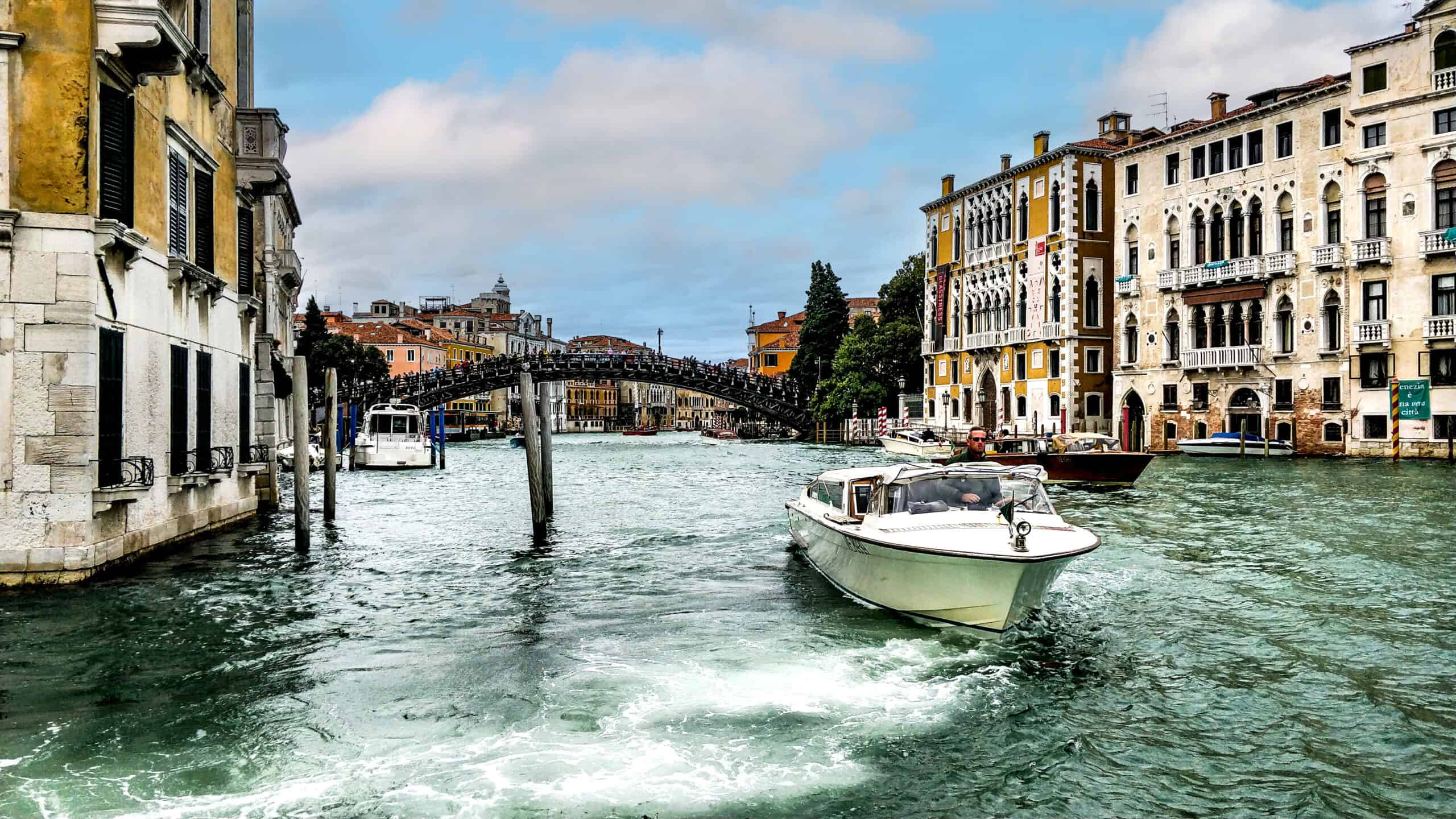
Venice feels like stepping back in time. Riding through winding canals on a gondola or strolling along narrow streets lined with stunning architecture is truly magical. The historical buildings and charming bridges create a picturesque backdrop. Venice’s culinary delights are not to be missed—local dishes like risotto and cicchetti await at charming eateries throughout the city. The vibrant markets entice visitors with fresh produce and local treats. Getting lost in Venice is part of the adventure; every turn reveals small shops and hidden squares ideal for relaxing with a gelato. Friendly locals share their stories, making your visit feel personal.

Lucerne stands out as one of the most beautiful places on earth. Nestled between mountains and situated on Lake Lucerne, it offers breathtaking views at every turn. The iconic Chapel Bridge, adorned with flowers, captures the essence of this charming city. Strolling along the lakefront path presents opportunities for stunning photographs, especially during sunrise or sunset when colors dance across the water. The welcoming vibe of Lucerne makes visitors feel at home; locals are enthusiastic about recommending their favorite spots. The delightful food scene features traditional Swiss dishes like fondue and raclette that warm your soul on chilly days.

Krabi in Thailand is all about adventure and relaxation. With stunning beaches and crystal-clear waters, it’s perfect for sunbathing or exploring nearby islands like Koh Phi Phi and Hong Island. Activities such as kayaking through mangroves or snorkeling vibrant coral reefs promise new experiences each day. The local cuisine bursts with flavor; from spicy curries to fresh seafood dishes served right on the beach, every meal is a celebration of Thai flavors. Krabi’s welcoming locals enhance its charm; their hospitality makes you feel at home in this tropical paradise.

Bangkok buzzes with life and energy. Known for its vibrant street life and cultural monuments, this city has something for everyone—from exquisite temples like Wat Pho, home to the famous reclining Buddha, to bustling markets filled with local goods inviting exploration at every corner. The nightlife is spectacular; whether enjoying rooftop bars with breathtaking views or lively night markets brimming with delicious street food, there’s never a dull moment. Sampling dishes from street vendors becomes an adventure, showcasing authentic Thai flavors bursting with freshness and spice. An efficient public transit system allows easy navigation through this sprawling metropolis.

Lastly, Montreux enchants me with its scenic beauty and tranquil atmosphere. Situated on the shores of Lake Geneva, this elegant city boasts stunning views of surrounding mountains and vineyards that create a picturesque backdrop for leisurely walks or boat rides. Montreux is renowned for its annual jazz festival, drawing music lovers worldwide; attending concerts by famous artists adds a touch of magic to your visit. Lovely flower-lined paths provide inviting spaces for rest or reflection as you enjoy breathtaking sunsets over the lake. Additionally, Montreux honors music legend Freddie Mercury with a statue overlooking the water—a must-see for fans.
These towns are my favorites for a reason—each possesses its unique charm that enriches my travels. I’d love to hear your thoughts! Do you agree or disagree with my picks? What’s your number one favorite town?
